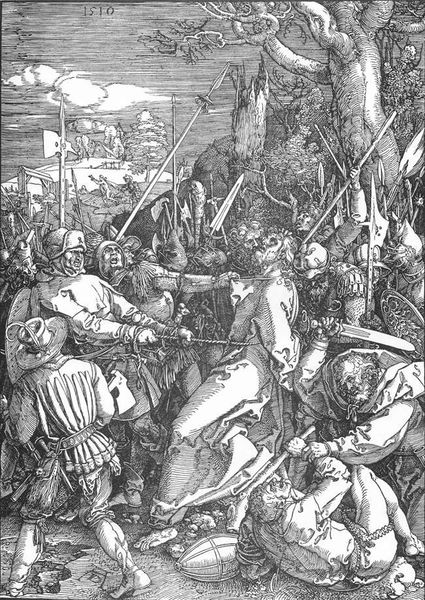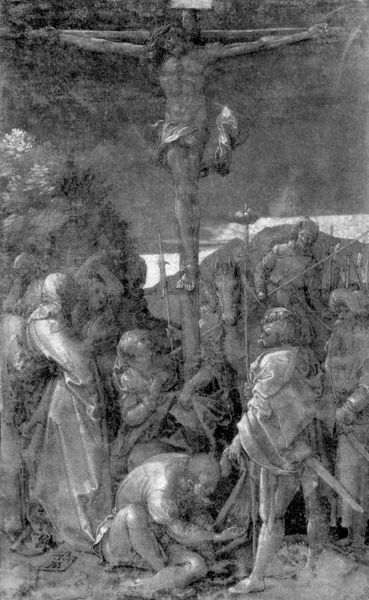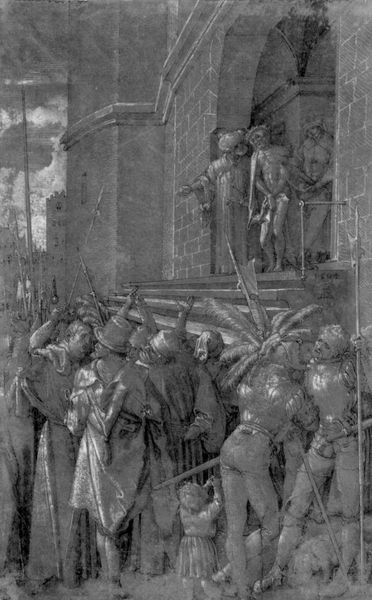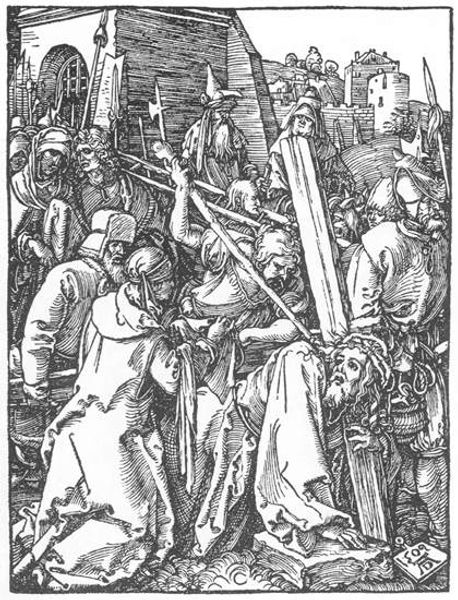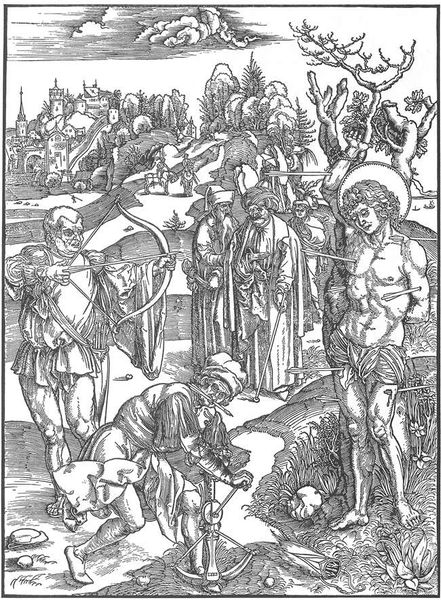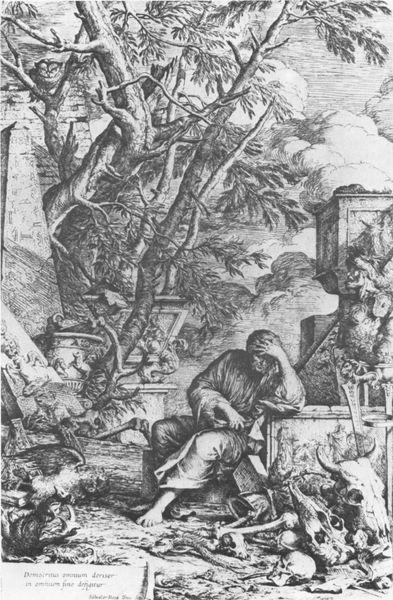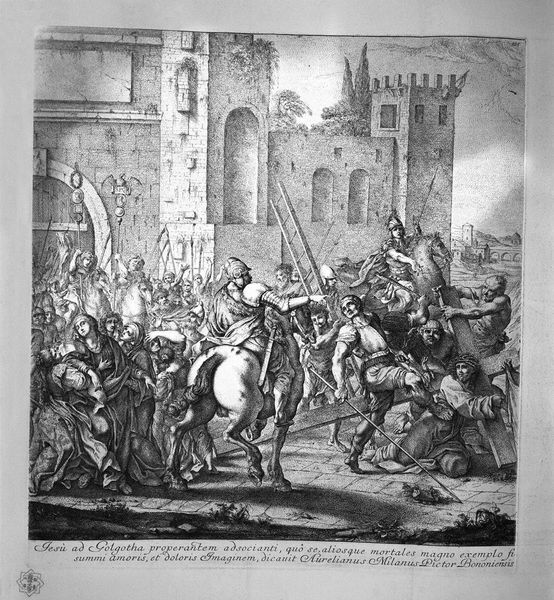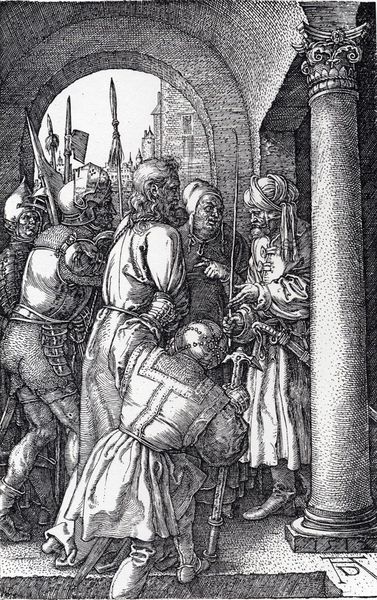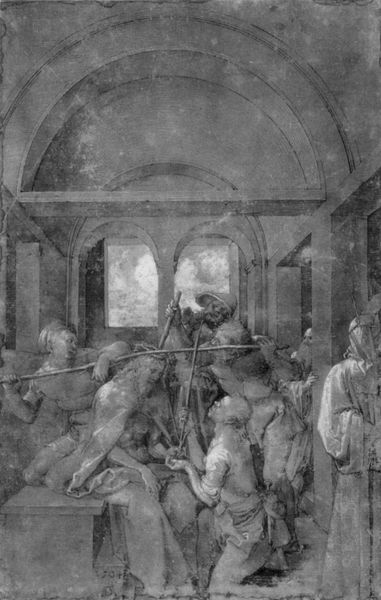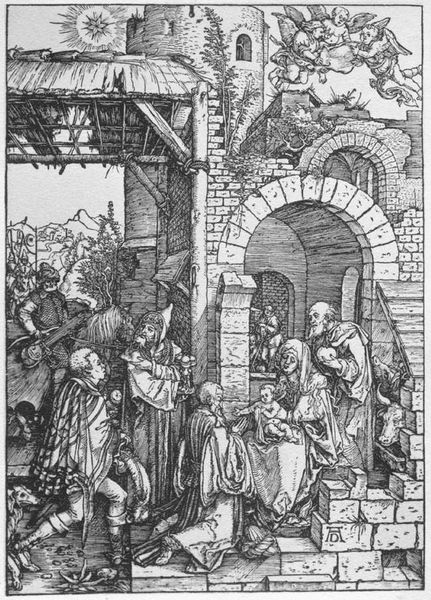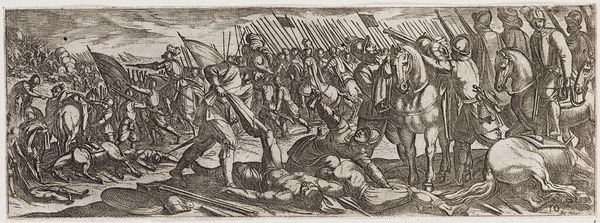
print, photography, engraving
#
portrait
#
narrative-art
# print
#
sculpture
#
figuration
#
photography
#
history-painting
#
northern-renaissance
#
engraving
#
realism
#
christ
Copyright: Public domain
Editor: This is "Christ before Pilate," an engraving by Albrecht Dürer. It’s rendered with so much detail, and the figures seem really still and stiff. How do you interpret this work? Curator: The engraving is laden with symbolic meaning. Notice the clear architectural space in contrast to the natural world beyond – it signifies the divide between civic law and divine will. How does the central column make you feel? Editor: It seems very rigid, almost imposing. Curator: Precisely. And the figures? Pilate stands within a defined, structured space while Christ is brought before him, connected to the world outside. This juxtaposition symbolizes the choice offered to humanity, law or faith, earthly or divine justice. Have you noticed how Christ’s humble position in front of the crowd evokes ideas of sacrifice and martyrdom? Editor: Yes, I see that. Also, there are all these menacing faces that seem to hint at an inevitable, tragic outcome. The image of the city on the hilltop brings to mind sacred Jerusalem and the divine order under threat. Curator: The architecture speaks volumes about the time as well. The arches draw back to Roman legal traditions that Pilate and the Holy Roman Empire draw upon for legitimacy and sovereignty. The choice that they frame and the response they expect have dire, tangible consequences for the time period. Editor: Seeing those symbols and their relation is fascinating. It connects the past to the present and clarifies how loaded historical images can be. Curator: Precisely. Visual symbols are often the bridges we construct to connect with cultural memory and continuity across eras. They speak a complex visual language we're still learning to understand.
Comments
No comments
Be the first to comment and join the conversation on the ultimate creative platform.
